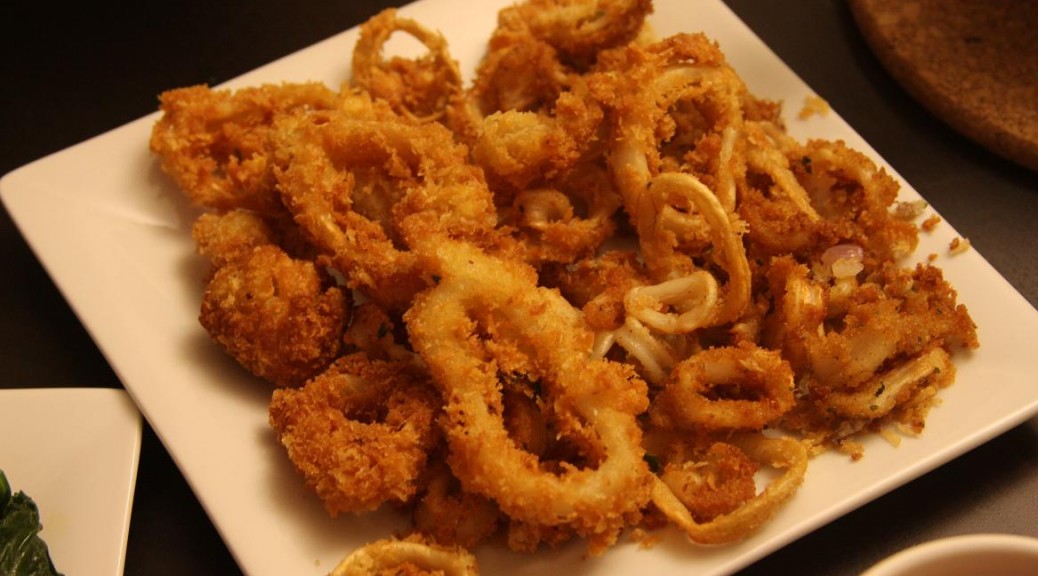What are you really getting in a restaurant when you order Calamari?
Pork bung and its doppelganger calamari have been gaining notoriety all across the country. Pork bung is used as imitation calamari. Put them next to each other and eat them in a blind taste test, and most people would never be able to tell the difference between the two. Pork bung, also known as pork chitterlings, and familiar to many in China as a late night snack, is pig rectum or a pig’s large intestine.

It has a pungent urine smell when it’s fresh, however, most wholesalers will have it cleaned and bleached before packaging it. It usually comes in a tube, uncut. Before cooking, you cut across so that it’s like little rings, just like calamari.
In restaurants everywhere, right this second, people are squeezing lemon wedges over crispy, golden, rings, dipping the rings into marinara sauce, and they’re eating hog rectum. Now they’re chewing — satisfied and deeply clueless. It’s payback for our blissful ignorance about where our food comes from and how it gets to us.
There have been rumors about a multi-state pork processing company selling pig rectum – referred to, by the industry, as “bung” – as imitation calamari. Dozens of experts could not shoot down the possibility that people are ordering squid and getting pork bung instead. Dozens of Chefs have served plates of fried bung next to a plate of fried calamari. No one could tell the difference.
Seafood fraud is becoming more and more common. A recent study by Oceana found the act of seafood fraud has been uncovered both in the United States and abroad at levels ranging from 25 to more than 70 percent for commonly swapped species such as red snapper, wild salmon and Atlantic cod. Oceana collected more than 1,200 seafood samples from 674 retail outlets in 21 states to determine if they were honestly labeled. DNA testing found that one-third (33 percent) of the 1,215 samples analyzed nationwide were mislabeled, according to U.S. Food and Drug Administration (FDA) guidelines.
Samples sold as snapper and tuna had the highest mislabeling rates (87 and 59 percent, respectively), with the majority of the samples identified by DNA analysis as something other than what was found on the label. Only seven of the 120 samples of red snapper purchased nationwide were actually red snapper. The other 113 samples were another fish. Halibut, grouper, cod and Chilean sea bass were also mislabeled between 19 and 38 percent of the time, while salmon was mislabeled 7 percent of the time.
If you think you can tell the difference– or that you’re safe when visiting a reputable sushi or seafood joint – think again.
Oceana found that 44 percent of all the retail outlets visited sold mislabeled fish. Restaurants, grocery stores and sushi venues all sold mislabeled fish and chances of being swindled varied greatly depending on where the seafood was purchased.
“Our study identified strong national trends in seafood mislabeling levels among retail types, with sushi venues ranking the highest (74 percent), followed by restaurants (38 percent) and then grocery stores (18 percent). These same trends among retail outlets were generally observed at the regional level,” Oceana said in their summary report.

So the next time you are in the mood for calamari, try making it yourself, using fresh squid from your local fish monger, it’s easy. See the “fried calamari” recipe in our GalleyChef blog.
